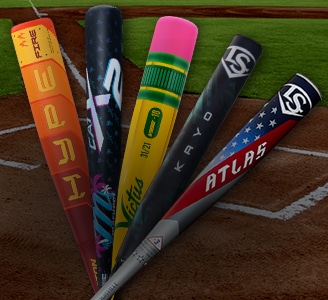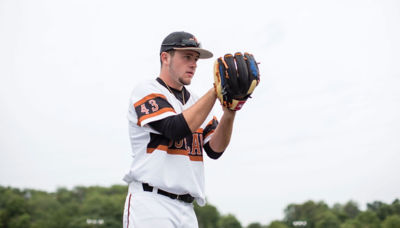How to Buy The Right Baseball Cleats
Get a leg up on the competition with the best baseball cleats for your game.

Baseball players are constantly on the move. From tracking down fly balls to legging out base hits, your feet are rarely at a standstill. To play at this intensity, you need to have the proper footwear. Baseball cleats can help keep you moving in the right direction while adding stability and security with each step.
When choosing the best baseball cleats for your upcoming season, there are some important factors to consider: material, height and type. It’s also important to pick a cleat that translates well to your position. Understanding these components can help lead you to a quality purchase and get you ready for the highlight reel this season.
BASEBALL CLEAT MATERIALS
Many baseball cleats are made of mesh and/or synthetic leather materials. This combination can provide ample breathability and durability on the diamond. Some synthetic materials can also improve water resistance, making them great for muddy or rainy game days. Ultimately, you should look for a cleat that feels the most comfortable on your foot.
Types of Baseball Cleats
One of the biggest decisions you will make when choosing your cleats is the type of spike. There are four basic styles to choose from, each with their own benefits.
IMPORTANT: Check with your coach or a league official prior to choosing a cleat style. Your league may prohibit the use of metal cleats for safety reasons.

Metal Cleats
The cleat of choice for professional ballplayers. Metal baseball cleats can offer the best traction on the diamond. Their thin, metal spikes penetrate the ground with ease, providing plenty of grip as you run. Don’t forget to check with your league prior to purchase. Metal cleats are often reserved for high school and college baseball due to possible safety concerns.

TPU or MCS Cleats
This style resembles molded cleats, but instead of rubber, they’re designed with a harder plastic spike pattern. These studs can be abrasion- and impact-resistant while still providing plenty of comfort. TPU and MCS baseball cleats are often lighter than other molded options, too.

Molded Cleats
Molded baseball cleats feature a strong, versatile construction and be a great option for players of all ages. Built with non-removable rubber studs, you can wear these baseball spikes on virtually any playing surface. Molded cleats often feature more studs in their layout, which can lessen pressure and make for a more comfortable fit.

Turf Cleats and Trainers
Turf baseball cleats are a sleek, comfortable option for training and playing on artificial turf. These can provide more grip than normal sneakers on the artificial surface and can also help preserve the playing field. Turf trainers can feature a less aggressive nub or tread pattern, making them a more comfortable option for off-field practices and training. For more information on how to choose baseball turf shoes, use these Pro Tips.
Baseball Cleat Height
There are two essential cleat heights for you to choose from: low and mid/high.
Low-Tops
Because of their shorter profile, low-top baseball cleats are more lightweight than other options. This makes them ideal for speed and agility. While low-top cleats can be great for the faster athlete, they don’t feature much ankle support. If you’re willing to sacrifice some security for a lighter fit, these are terrific cleat options.
Mid-Tops and High-Tops
Mid- and high-top baseball cleats are made for stability and security. This cleat height can provide the most ankle support compared to other styles. However, the added material in the ankle does increase the cleat’s weight, which can be a concern for some athletes.
Baseball Cleats For Every Position
You don’t need a different cleat for every position you play — most cleats work well no matter where you are on the field. However, if you want a pair of cleats specifically designed for certain positions, here are guidelines to consider:
Outfielders
If allowed by your league, many outfielders prefer metal cleats are over molded cleats. You’ll avoid picking up chunks of grass and dirt, which will help you to move more freely when tracking down fly balls, hits and grounders.
Infielders
Molded cleats work just fine for most infielders, unless you find yourself on a diamond that’s extremely dry or composed of packed dirt. In that case, metal cleats will once again be your go-to for the most traction (if allowed).
Pitchers
Because of the repeated motion and precise footwork involved with this position, pitchers will do best with low-top cleat to avoid any unnecessary rubbing on the ankle area. High-top cleats may lead to blisters or irritation.
Baseball Cleat Fit
Remember, your cleat’s fit should be snug with a little room in the toe. A well-fitted shoe can help provide maximum support for the quick movements you’ll make on the field.
Use these baseball Pro Tips or check out our baseball cleat resource center to take a step in the right direction with your game.
Searching for the right size? Look for the True Fit icon on apparel and footwear product pages when shopping online at DICK’S Sporting Goods. Get personalized size and fit recommendations with just a few clicks. Learn more about True Fit.













